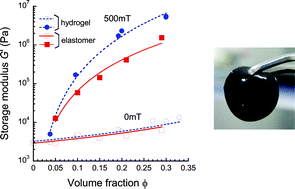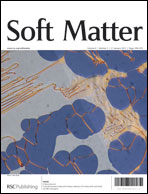Magnetism and viscoelasticity of magnetic elastomers with wide range modulation of dynamic modulus
Abstract
Magnetism, dynamic viscoelasticity, mechanical property, and durability of magnetic elastomers consisting of polyurethane and carbonyl iron particles were investigated. Magnetic measurements revealed that the magnetic permeability of the magnetic elastomers can be explained by the linear combination of the magnetic permeability of magnetic particles and polyurethane. Dynamic viscoelastic measurements showed that the magnetic particles are randomly dispersed in the elastomer. On applying a magnetic field of 500 mT, the magnetic elastomers demonstrated a drastic change in the dynamic modulus; the storage modulus increased from 6.5 kPa to 1.6 MPa, and the loss modulus increased from 3.6 kPa to 0.16 MPa. This drastic change in the dynamic modulus was observed at all frequencies from 0.01 Hz to 3 Hz. The critical volume fraction showing the transition from a random dispersion to a chain structure decreased significantly with the magnetic field. Compression tests revealed that the magnetic elastomers exhibited high mechanical toughness with high breaking strain exceeding 0.8. Durability tests showed the magnetoviscoelastic behavior of the magnetic elastomers was maintained for 1.5 years after the synthesis without degradation.


 Please wait while we load your content...
Please wait while we load your content...